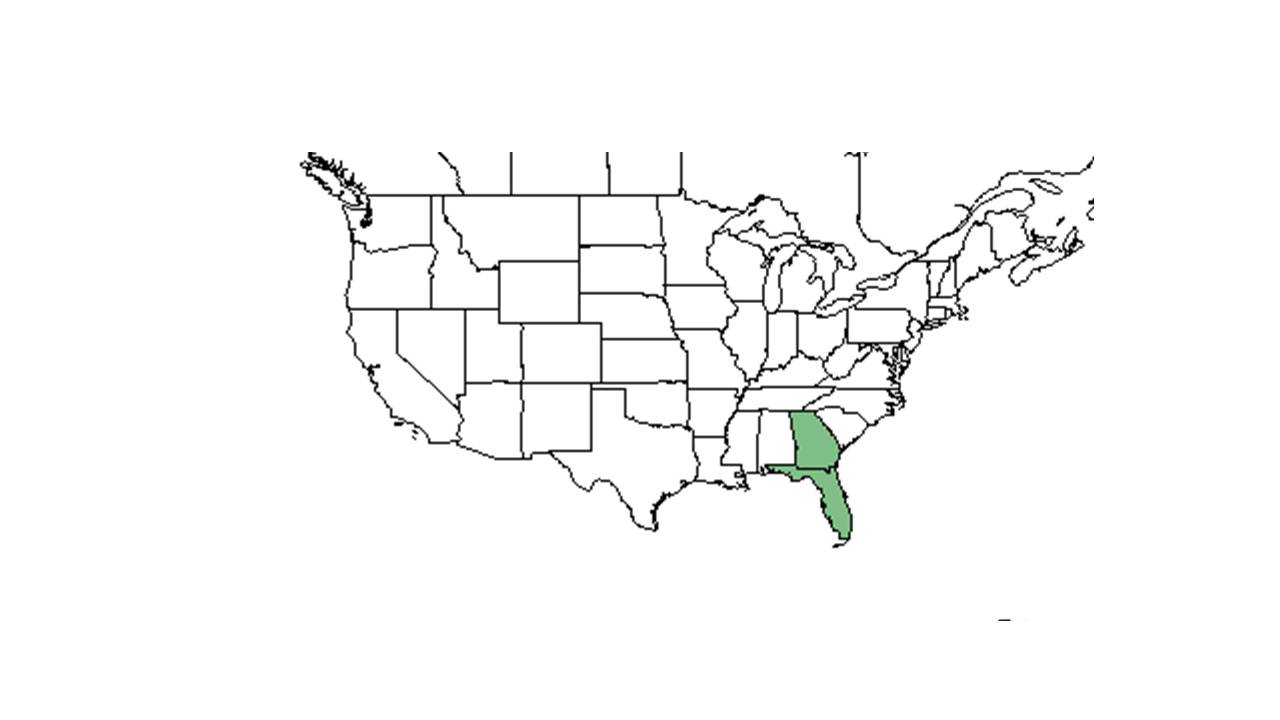Difference between revisions of "Ageratina jucunda"
KatieMccoy (talk | contribs) |
|||
| Line 31: | Line 31: | ||
==Ecology== | ==Ecology== | ||
===Habitat===<!--Natural communities, human disturbed habitats, topography, hydrology, soils, light, fire regime requirements for removal of competition, etc.--> | ===Habitat===<!--Natural communities, human disturbed habitats, topography, hydrology, soils, light, fire regime requirements for removal of competition, etc.--> | ||
| − | This species is found in a wide variety of habitat types including longleaf pine-saw palmetto, dunes, rocky environments, old fields, ecotone from scrub oak sand ridge to shrub | + | This species is found in a wide variety of habitat types including longleaf pine-saw palmetto, dunes, rocky environments, old fields, ecotone from scrub oak sand ridge to shrub bog, stream banks, dry flatwoods<ref name="Flora of North America">Flora of North America http://floranorthamerica.org/, accessed 15 May 2015.</ref>, pine scrubs, and longleaf pine-turkey oak sand ridges. It can also occur along roadsides and in abandoned fields<ref name="natureserve">, phosphate quarries in hardwoods, alongside pavved roads, rocky plantation pastures, and edges of field tracks (FSU Herbarium). Soils include drying loamy sand with sandy, damp, and rich humus soils (FSU Herbarium). This species thrives in environments with moderate shade to high light conditions(FSU Herbarium). |
Associated species incldues ''Solidago stricta, Sabal palmetto, Serenoa repens, Quercus virginiana, Quercus laurifolia, E. petaloideum, Thelypteris, Woodwardia, Arnoglossum diversifolium, Quercus laevis, Liatris tenuifolia, Pityopsis graminifolia, Liatris elegans, Pinus palustris, Aristida stricta'' and others (FSU Herbarium). | Associated species incldues ''Solidago stricta, Sabal palmetto, Serenoa repens, Quercus virginiana, Quercus laurifolia, E. petaloideum, Thelypteris, Woodwardia, Arnoglossum diversifolium, Quercus laevis, Liatris tenuifolia, Pityopsis graminifolia, Liatris elegans, Pinus palustris, Aristida stricta'' and others (FSU Herbarium). | ||
Revision as of 14:08, 22 March 2016
| Ageratina jucunda | |
|---|---|

| |
| Photo by Dennis Girard, Atlas of Florida Vascular Plants | |
| Scientific classification | |
| Kingdom: | Plantae |
| Division: | Magnoliophyta - Flowering plants |
| Class: | Magnoliopsida - Dicotyledons |
| Order: | Asterales |
| Family: | Asteraceae ⁄ Compositae |
| Genus: | Ageratina |
| Species: | A. jucunda |
| Binomial name | |
| Ageratina jucunda (Greene) Clewell & Woot. | |

| |
| Natural range of Ageratina jucunda from USDA NRCS Plants Database. | |
Common names: Hammock snakeroot; Small leaf Thoroughwort
Contents
Taxomomic notes
Synonym: Eupatorium jucundum Greene
Description
A description of Ageratina jucunda is provided in The Flora of North America. It is a perennial (Hall 1993). It is common in all of Florida; flowers from fall to winter (Hall 1993).
Distribution
Ageratina jucunda is endemic to the southeastern United States, only known to occur in Florida and a few counties in Georgia. [1]
Ecology
Habitat
This species is found in a wide variety of habitat types including longleaf pine-saw palmetto, dunes, rocky environments, old fields, ecotone from scrub oak sand ridge to shrub bog, stream banks, dry flatwoods[2], pine scrubs, and longleaf pine-turkey oak sand ridges. It can also occur along roadsides and in abandoned fieldsCite error: Closing </ref> missing for <ref> tag[2] It is been seen flowering in the month of August and October through January and fruiting during August and from October-December (FSU Herbarium).
Fire ecology
Long-term fire management is important for survival and it's an associate species of longleaf pine and wiregrass communities. [1]
Use by animals
Stephanie Sanchez observed a Malachite butterfly feeding on a snakeroot flower.[3]
Conservation and Management
Cultivation and restoration
Photo Gallery
References and notes
Florida State University Robert K. Godfrey Herbarium database. URL: http://herbarium.bio.fsu.edu. Last accessed: June 2014. Collectors: Jame Amoroso, Bian Tan, John B. Nelson, O. Lakela, J. P. Gillespie, Robert K. Godfrey, Robert L. Lazor, John Lazor, W. G. D'Arcy, Robert Kral, Elmer C. Prichard, Andre F. Clewell, Loran C. Anderson, K. Craddock Burks, H. S. Conard, E. Bell, and Jean W. Wooten. States and Counties: Florida: Columbia, Volusia, Hillsborough, Marion, Taylor, Alachua, Sarasota, Sumter, Polk, Citrus, St. Johns, Leon, Hernando, Jefferson, Suwanee, and Levy.
Hall, David W. Illustrated Plants of Florida and the Coastal Plain: based on the collections of Leland and Lucy Baltzell. 1993. A Maupin House Book. Gainesville. 98. Print.
Wunderlin, Richard P. and Bruce F. Hansen. Guide to the Vascular Plants of Florida. Second edition. 2003. University Press of Florida: Gainesville/Tallahassee/Tampa/Boca Raton/Pensacola/Orlando/Miami/Jacksonville/Ft. Myers. 295. Print.
- ↑ 1.0 1.1 Natureserve http://www.natureserve.org/, accessed 15 May 2015.
- ↑ 2.0 2.1 Flora of North America http://floranorthamerica.org/, accessed 15 May 2015.
- ↑ http://butterflies.heuristron.net/plants/ageratinaJucunda.html, accessed 15 May 2015).